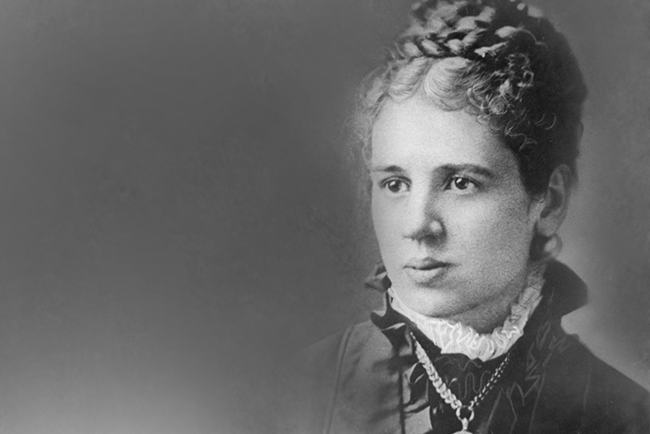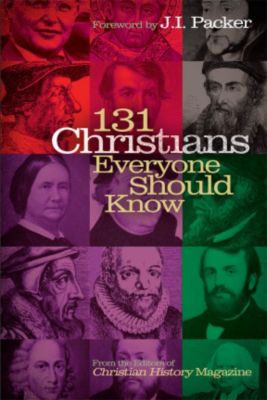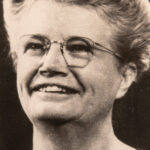
Due to her zeal and superior organizational skills, Annie Armstrong shaped the nature of Southern Baptist mission support.
By Susie Hawkins
Some of the lesser-known women in church history have had the most profound influences. Annie Armstrong, a Southern Baptist mission-minded woman who was a true visionary and extraordinary leader, is one of those women.
In the latter part of the 19th century, Lottie Moon sailed for China and became the Southern Baptist Convention’s (SBC) first single-woman missionary to serve on an international field. Lottie Moon became a household name for Baptists, especially once the SBC annual Christmas offering was named after her. As one of Moon’s contemporaries, Armstrong played a large part in naming the offering after Moon as well as expanding the cause of missions in her denomination and nation.
Missions in the SBC
In order to get a true sense of Armstrong’s contributions, we need to understand some church history. In the late 1700s, William Carey sailed for India, launching what is now called the modern missionary movement. Well-known missionaries such as Adoniram Judson, Hudson Taylor, and David Livingstone followed his example and inspired hundreds of Christians over the next century to take the gospel to the far corners of the globe. In accordance with this movement, women of all denominations began to form mission organizations dedicated to praying for missionaries and raising support. Baptist women began to explore ways they could do the same.
“Annie Armstrong was confident in God’s calling and His equipping and left a legacy of missions advocacy.” — @SusieHawkins1 Click To TweetIn 1868, a group of women attending the SBC meeting in Baltimore gathered in the home of Mrs. Ann Graves. Her son, Rosewall, was a missionary in China and had written numerous letters to her, describing the critical need for female missionaries to help reach Chinese women. Of course, they were already familiar with Moon’s dramatic letters published in the “Foreign Mission Journal” that vividly described the spiritual poverty of the Chinese, pleading for funds and personnel. The women determined to join together every year and began organizing mission support groups in their local churches.
It wasn’t long before the convention recognized that these women were serious about this idea and fully intended one way or another to create a national organization to meet this need. Their plan was to provide resources and education for churches, mobilize women to become active in mission causes, and raise funds. In their view, churches needed to be unified and coordinated in their mission effort.
The road to the WMU
Enter Armstrong. She had long been active in mission work and had frequently exchanged letters with Moon, who taught her about the missionary experience. Both women were dynamic personalities in their own right and agreed that a national Baptist organization would strengthen the missions cause considerably. This culminated in the women’s meeting at the 1887 convention. Armstrong introduced a resolution to appoint a committee to pursue forming a national organization. Its purpose was to be an auxiliary to help the mission board, the convention, and churches to become “more efficient in collecting money and disseminating information on mission subjects.”
While a number of influential women supported the project energetically, Armstrong was the one who drove it. Her motto from that point on was “Go forward!” She drew this from Exodus 14:15: “And the Lord said to Moses, ‘Why do you cry to Me? Tell the children of Israel to go forward’” (Exodus 14:15, NKJV). The following year, the Woman’s Missionary Union (WMU) of the SBC officially formed, with Armstrong serving as corresponding secretary. The WMU flourished as it gained exposure, giving eager women the opportunity to become personally involved in mission work, from the national level to the local church.
Supporting international missions
As it turns out, Armstrong was just getting started. Mindful of all she had gleaned from Moon, she immediately began promoting a convention-wide Christmas missions offering with the support of the leadership of the Foreign Mission Board (now the International Mission Board). Armstrong also intended to find a replacement for Moon so she could take a furlough, having served 15 years on the field. At that time, missionaries did not usually take furloughs. To publicize the offering, the Mission Board provided $100 for postage and literature, a large expenditure in that day.
In its first year, the offering for international missions organized by Annie Armstrong brought in 165% of its original goal. Click To TweetThe first year, Armstrong’s goal for the offering was $2,000. But it actually brought in $3,300, confirming Southern Baptists’ genuine interest in and concern for missions. According to Armstrong’s calculations, that was enough to send three women to China, instead of just one. After such an encouraging response, Southern Baptists promoted the Christmas offering every year. The tireless Armstrong suggested calling it the “Lottie Moon Christmas Offering for Foreign Missions,” and so it was. This offering was born out of Moon’s and Armstrong’s passion to see missionaries globally proclaim the name of Jesus. Their evangelist fervor is a part of their legacy today.
Supporting national missions
Armstrong, ever the visionary, then set her sights on the Home Mission Board (now the North American Mission Board). That board was looking for support promoting their missions cause as well. Armstrong picked up on their need. And over the next decade, she wrote an astounding 18,000 letters advocating for both mission boards. In the following years, she traveled extensively at her own expense, visiting national and international missionaries, doggedly telling their stories at every opportunity.
Over a decade, Annie Armstrong wrote 18,000 letters advocating for what became @NAMB_SBC and @IMB_SBC. Click To TweetDue to her zeal and superior organizational skills, Armstrong continued to shape the nature of Southern Baptist mission support. She had proven to be an exceptional leader—capable of building consensus between denominational leaders, newspaper editors, and churches. Her innovative ideas on how to best raise funds were successful and well-received. In 1895, Southern Baptists officially established another offering, this one for Home Missions. They eventually designated it as the Annie Armstrong Easter Offering, recognizing Annie’s outstanding contributions. The WMU strongly supported both offerings, urging churches to be mission-minded and mission-hearted. Over time, WMU proved to be an effective platform for women’s voices and would firmly keep the missions cause front and center in Baptist life for many years.
Annie died in 1938, the year WMU celebrated its 50th anniversary. She was confident in God’s calling and His equipping and left Baptists a legacy of missions advocacy. May we follow in her footsteps and “Go forward!”
Other women in church history articles:
For permission to republish this article, contact Marissa Postell Sullivan.

Susie Hawkins
Susie lives in Dallas and has been actively involved in ministry as a pastor’s wife, teacher, and volunteer. A noted author, Susie holds a Master of Arts in Christian Leadership and a Master of Arts in Theology from Criswell College.











